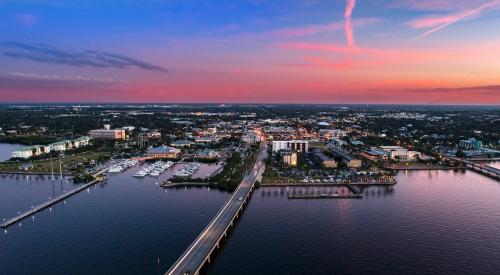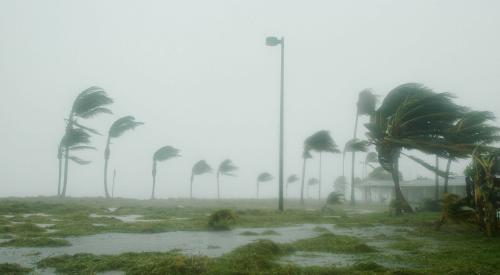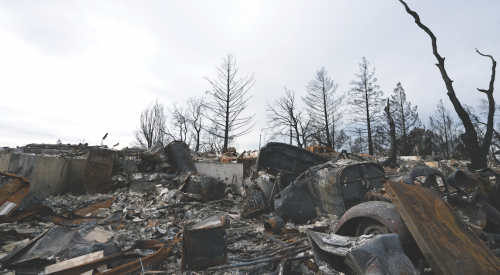If Florida's unusually rough hurricane season had a silver lining, it was that new homes built to new codes are as sturdy as hoped. The damage from mid-August Hurricane Charley was considerable, wracking up an estimated $15-billion, according to Gov. Jeb Bush, even before Frances drenched the state with slow-moving rains and Ivan added more of the same insult to injury.
Richard Reynolds, president of R.G. Reynolds Homes of Bradenton, toured the worst of Hurricane Charley's devastation as an NAHB representative to a FEMA (Federal Emergency Management Agency) task force. He found himself "thrilled" that "you could almost just skip over the new houses, because there wasn't anything to look at, they survived so well."
Credit goes to the statewide Florida Building Code 2001, enacted in March 2002 to preempt disparate local codes.
Stronger Homes
The key technical aim and accomplishment of the code was to create a continuous load path from roof to foundation using connectors, braces and other simple measures done right.
Put simply, the 2001 state code is essentially the International Building Code's residential portion, strengthened with some of the tougher measures passed in the wake of Hurricane Andrew in 1992. The 2001 code also included the addition of four wind zones to total seven that range from 100 miles inland to 150 at the state's coastal tip.
According to code expert Jack Glenn, director of technical services for the Florida Home Builders Association, 40 percent of the damage from Andrew in '92 was directly attributed to enforcement of the South Florida Building Code used by Miami-Dade and Broward Counties. In the aftermath, qualifications and training for both contractors and inspectors were bumped up, eventually statewide.
"Everybody is better trained today, by leaps and bounds," he says, adding that "this is the single biggest change in Florida construction in the last 14 years." The code is subject to annual upgrades and a new code is released every three years in keeping with national guidelines.
Reynolds agrees builder knowledge and adherence to code along with stepped-up enforcement are "the most significant changes" the law has brought. Builders estimate the 2001 law and its provisions have increased inspections by 25 percent or more, and that inspectors are more thorough and better trained than in the past.
Room for Improvement
New structures stood against Charley's winds, which spiked above 140 miles per hour. But new homes were still susceptible to water damage, which can drench insulation and drywall and lead to a collapse. New homes also suffered from flying debris (known as "missiles") that can damage homes and further invite water incursion.
Weak links likely to be discussed when the storm clouds clear include:
- more inland use of impact-resistant windows or shutters, which are not required statewide;
- better attachment of shingles on roof eaves, ridges and hips using adhesives, connectors or other water-sealing measures;
- better bracing of soffits to prevent physical damage, water under the eaves and mold growth;
- higher standards for additions and attachments, such as carports and the pool enclosures (known as "cages"), are already in the works for 2005. Too often, these structures blew away, taking soffits with them to expose the roof to hurricane winds and rain.
But there are limits to how much money can or should be thrown toward defeating forces of nature.
In one report from Punta Gorda, former FEMA director James Lee Witt advocated "safe rooms that you can build in your homes that will withstand wind up to 250 miles an hour." Barry Rutenberg, owner-president of a custom/luxury homebuilding firm in Gainesville, explains, "If you get hit with an F5 tornado, you're done. You're just done." Likewise, he believes it would be unrealistic to expect building codes to account for falling trees like the one that recently fell on a home he built 25 years ago.
"I got a call from the owner. A tree 36-inches in diameter tree fell on this 2,800 square-foot house, and there's damage almost from one end to the other. How can you prevent that?"










